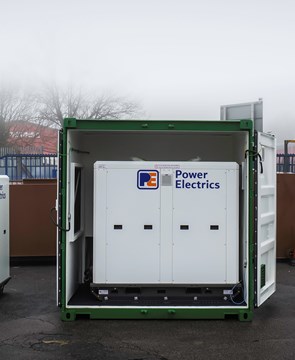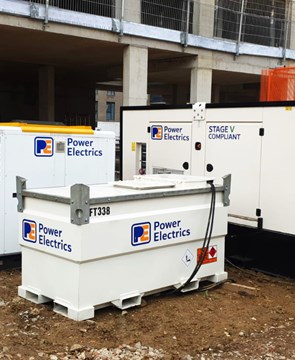Generator Sizing: A Step By Step Guide
When it comes to generators, size matters. Undersize a generator and you won’t be able to power your equipment; oversize a generator and you’re wasting money. If you know you need to hire a generator but don’t know where to start, don’t panic!
In this blog, we will talk you through some generator sizing basics.
1. Calculate the load size
First things first, what equipment will the generator be running?
Make a list of everything you need to power and add up the total wattage.The total wattage will tell you the amount of electrical power required by your equipment and from there you can work out the minimum electrical input needed from a generator.
You can find wattage information either on the equipment’s silver nameplate or in the manufacturer’s guide.
NB. Some electrical equipment has a different starting and running wattage. This is because it takes more energy to start equipment with an electric motor than it does to keep the motor running. It is vital that any initial surge in wattage is factored into the generator sizing process: it’s no use having a generator that matches your running requirements but doesn’t have enough power to start the load.
2. Convert kW to kVA
If you add up the maximum required wattage for your equipment, you’ll end up with your total power requirement in kilowatts (kW). Kilowatts is the actual power that will be used by the load to produce a useful working output.
Generators are rated in kilo-volt-amperes (kVA). kVA is a measure of apparent power: it tells you the total amount of power in use in a system. In a 100% efficient system kW = kVA. However electrical systems are never 100% efficient and therefore not all of the systems apparent power will be used to produce a useful work output.
You can convert between kVA and kW if you know the efficiency of the electrical system. Electrical efficiency is expressed as a power factor between 0 and 1: the closer the power factor is to 1, the more efficiently the kVA is being converted into useful kW.
International standards rate generators as having a power factor of 0.8. Power factor is very important for matching the size of your load to a generator: a generator that is rated at 100kVA and has a 0.8pf will be too small to power equipment that requires 100kW of actual power.

*Generators have a power factor of 0.8.
So, if the equipment you want to power has a total wattage of 100kW, the minimum size generator that could produce that would be a 125kVA. However load size is only one contributing factor.
Read our blog post on the difference between kW and kVA for a more detailed explanation.
3. Define your running requirements
Will the generator be a standby measure or your primary power source?
A generator should not be operated at maximum capacity for more than 30 minutes. If you’re going to be using the generator as your main power supply, you’ll need to size for 70-80% capacity. As well as improving performance, leaving a 20-30% safety margin will also allow for future power requirements.
4. Analyse site conditions and access
Once you’ve calculated the load size and factored in your running requirements, you’ll have a good idea of the amount of electrical input needed from a generator. The next step is to confirm that your power requirements are feasible given the conditions and location of your site.
Site access and manoeuvrability have a big impact on how the generator is delivered and offloaded and this can also affect generator sizing. If access to the site is particularly narrow, uphill or off road then larger, less manoeuvrable vehicles may not be able to get on and off site. Similarly, if onsite space is limited there may not be enough room to extend the stabiliser legs necessary for offloading the generator, let alone enough space to operate the crane and position the generator.
5. Contact a certified electrician
We would always recommend that you talk to a certified electrician or generator specialist before hiring a generator. Sometimes just a generator by itself isn't always the answer, utilising batteries alongside a generator can change the power solution greatly.
If you need some more guidance as to the best generator to hire for your next project contact us below.




